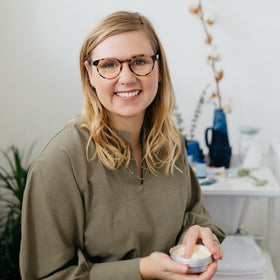How to Cultivate a Green Thumb with Garden Party

Garden Party is a garden design and maintenance company co-owned by us: Amber Stafford and Courtney-Anne Craft, two plant-loving freaks of nature. Between the two of us, we’ve had just about every job related to plants: from private golf courses to San Franciscan flower farms, gardeners for private residences to running the grocery store floral department. We are here to tell you that being a green thumb is all nurture, not nature. There will be trial, error, and a few #fails, but we believe that with a few helpful tips on the how, what and why of plant selection you can turn any space into a lush, green garden paradise.
Selecting The Best Garden Spot
Selecting the right plants for your garden comes down to making some careful observations of the growing environment. How much light does the garden get throughout the day? Is it hot, direct sun, or more dappled and indirect? Look out for any trees or buildings that will impact the amount of light hitting the garden. Here is a quick trick: South and West-facing gardens receive the most sun, while East and North-facing receive the least. (*This is a general rule that can be applied within urban areas which are heavily built up with buildings.) If you face South or West go with plants that are categorised as full sun. East or North facers will do well with part to full shade plants.
Why and How to Include Native Plants in Your Garden
Any careful observation of your plant’s growing environment will include consideration of the local ecology as well. Selecting plants that are native to your area helps to support its naturally occurring biodiversity. Native plants provide the food and shelter that bugs, birds, and bees have evolved to rely on. If you think of plants as being the base level of the food chain, it’s easy to see how much of an impact a diminishing native plant population will have on the rest of the chain. These plants support insect populations that provide food to birds, provide pollen to bees, and support special ecological relationships between wildlife and plants. As an example, the Karner Blue butterfly has become endangered because of diminishing populations of the wild Lupine. The Karner Blue uses the wild Lupine as a host for its larvae.
Maybe the most special relationship native plants have is that with local pollinators. Pollinators, including bees, moths, butterflies, and birds both humming and non, have evolved alongside native plants and also rely on them for food. Pollinators allow plants to produce fruit by transferring pollen from flower to flower. This allows the production of fertile seeds and fruit, which goes on to feed so many other creatures in the food chain. Including us!
If you need another reason to go for a native plant, North American and Ontario plants often require much less care and maintenance! This is due to the fact that the plant has evolved in our wild Canadian climate, thus is well adapted to the environment. Native plants often require less water, less fertilizer, and fewer soil amendments.
As you are looking to plant a garden this summer, don’t be afraid to get your hands dirty! With a little careful thought and observation, any thumb can learn to be green. Consider your environment when selecting your plants - from light and shadows, to the tiny creatures that make up the ecosystem of your garden. Look for plants that really light your aesthetic fire, but also consider supporting the natural biodiversity in your area. Native plants are beautiful and provide so much to the birds, the bees, the butterflies, and beyond. Happy planting!
___________________________________________
YOU MAY ALSO LIKE...
HOW TO GROW + ENJOY AMAZING ONTARIO LAVENDER
Q&A WITH LOCAL BEEKEEPER DENNIS EDELL
SEASONAL TRANSITIONS | CLEANSE THE BODY AND MIND FOR A FRESH START



